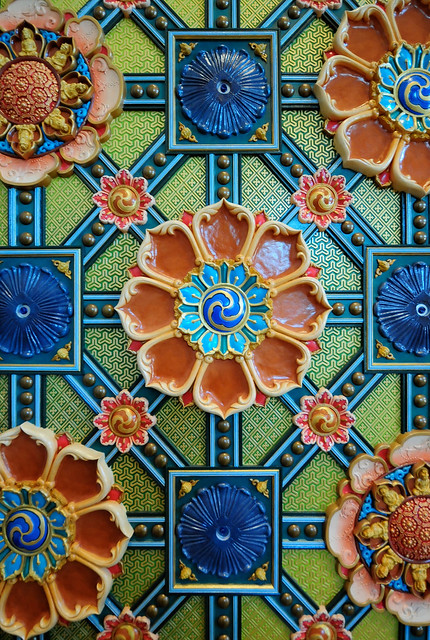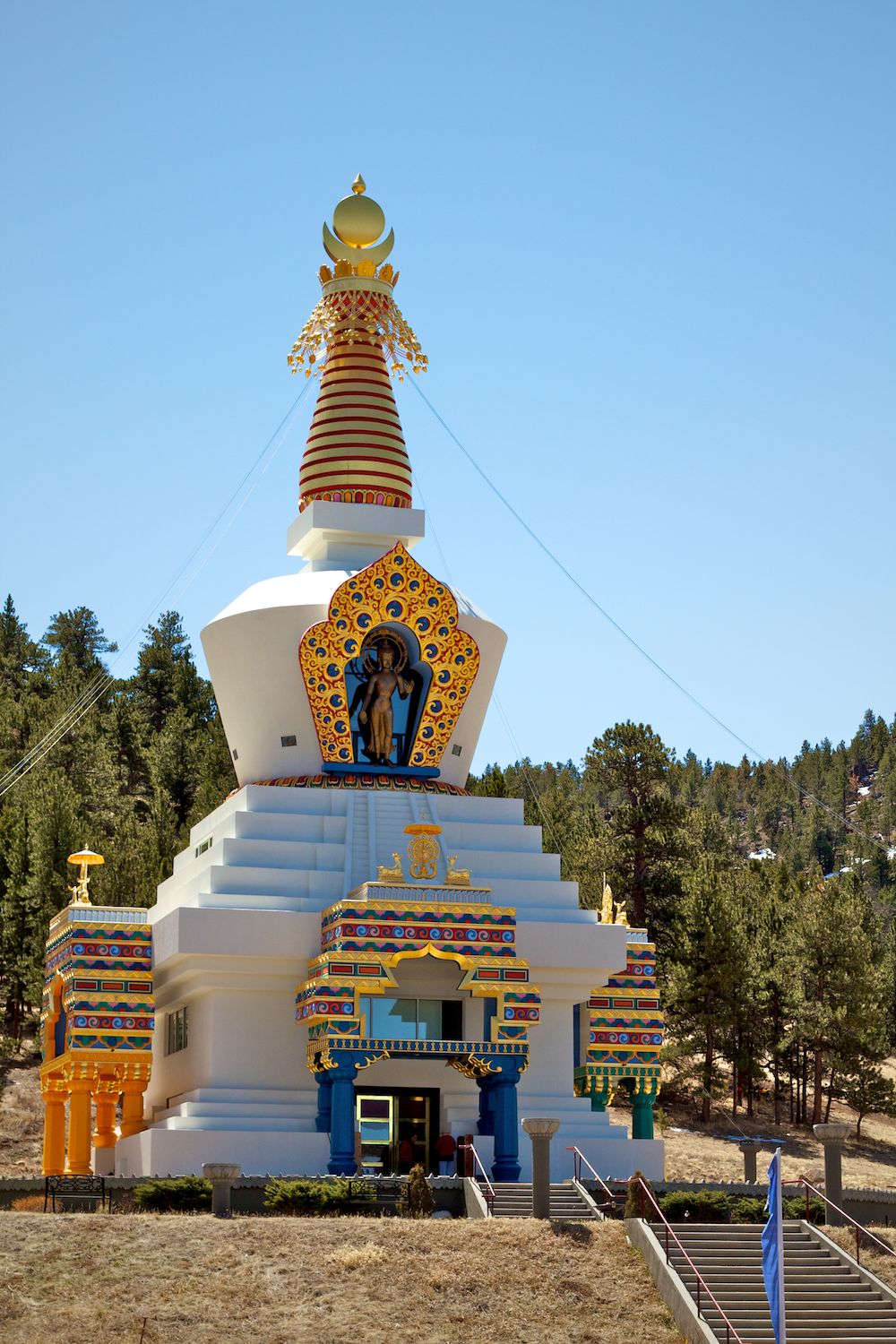Lately—because
it’s a new year—I’ve been considering canceling my health insurance. I
know it sounds crazy, but I never—and I mean never— go to the doctor, at
least not allopathic doctors. Whenever I have some ailment I’ll visit
an acupuncturist or a homeopathic practitioner or the like, and those
visits often cost less than the co-pay for a Western doctor. Plus,
there’s the fact that most doctors’ offices these days seem to run like
factories, with new patients scheduled every 15 minutes; you barely have
time to tell your doctor what your symptoms are before the doctor has
to leave the room to tend to someone else. My dog Chloe gets better
medical care.
Speaking of which …
Chloe, a sweet-faced Spaniel mix, doesn’t look like a troublemaker
or act like a troublemaker: she is well-behaved, well-trained and always
remains within sight when I let her off-leash. But in the eight short
years I’ve had her, she has troubled my bank account a bit,
managing—through various small mishaps—to rack up several thousand
dollars in veterinary bills. I’m not complaining; she’s worth every
penny. Just don’t ask me about the time she ate a river rock and had to
have emergency surgery. That procedure cost more than three months’
rent. Still—my dog is priceless.
A few years ago, Chloe and I had to make a special trip to the vet
because she somehow managed to get a marrow bone lodged around her lower
jaw. Yes, one could say it was my fault for letting her have such a
small marrow bone in the first place. (I honestly didn’t know then that
size mattered.) And yes, one could also say her torn ACL in 2009
($3,300) was my fault, for letting her off-leash to chase rabbits (but
I—a city person—didn’t know there were rabbits hidden in the brush so
late in the season). And let us not forget the lacerated paw pads of
2008 from running through tide pools ($376); the epic river rock
adventure of 2007 (swallowed for free, surgically removed for several
thousand dollars); or even the strained shoulder, which wasn’t anyone’s
fault—her boyfriend Rainbow, an exuberant English Setter whom we love,
plowed into her on the play field (not that we blame him for wanting to
play).
Anyway, any of these could be seen as my “fault” because I allow my
dog to run in the woods, and play, and leap over fallen logs, and plow
through bramble bushes, and swim in the river. And it’s not as though I
ever let Chloe run around unsupervised. She, for one, never lets me out
of her sight, so lack of supervision is not possible for either of us.
But off-leash recreation is obviously a larger topic. Should you
keep your dog confined and/or leashed, keeping him/her safe but
undoubtedly frustrated and bored? Which can then lead to destructive
behavior such as chewing and incessant barking and a genuinely unhappy
dog? (New sofa: $1,499; replacement for chewed-up dog crate: $189 plus
s/h; irate neighbor: how does one set a price on that?) Or should you
let your dog off-leash for quality playtime, stimulation and exercise?
(Thus, some would argue, putting the dog at risk for injury.)
I have obviously chosen the latter approach. But does this make me, as a dog guardian,
bad to the bone? Let’s get back to the bone.
Who knew marrow bones could be dangerous?
And what dog doesn’t love a good marrow bone? Especially on a blustery
winter day, when the winds are gusting at 60 mph and the freezing rain
sounds like machine gun fire against the windows, and there is nothing to
do but remain inside and stare at the hideously wallpapered walls of
the Myrtle Beach, S.C., high-rise where we were staying to escape the
chilly weather of New York. What dog doesn’t particularly love a bone
when she has been condemned to strictly limited exercise, meaning three
short pee-walks per day, because of a fairly recent rabbit-chasing
incident that resulted in a re-strained ACL and two $250 trips to the
vet? Chloe loves her marrow bones, and I love watching her enjoy them.
Plus, it kept her occupied while I applied acupressure to her knee
points. I was only doing what I thought was right.
That night, however, while I was in the kitchen making ginger tea, I
heard a yelp and a helpless little whine, and rushed into the living
room to see what was wrong. There, I found Chloe with the bone-ring
lodged around her lower jaw. I have to admit that it was hard not to
laugh—she had stopped whining and was looking at me with a completely
perplexed expression on her face, the bone shaping her mouth into a
goofy smile. And don’t be mad at me for laughing because everyone who
has experienced this tells me they laugh, too. They take pictures. And
videos. And post them online. Google it and you’ll see.
I did not take photos, however. Instead, I knelt before the dog,
stroked her head and told her I would help her get the bone off. But
said bone was wedged behind her canine teeth, and I could see no way to
slip it back over those teeth and off her jaw. In fact, it looked as
though I would have to wedge it off—no benign slipping allowed. I
realized that this is why Chloe had yelped: one hard crunch had forced
the bone behind her teeth.
Poor baby. As I inspected her mouth and turned her jaw this way and
that, my good girl kept her head still and wagged her tail. She even
tried to kiss me, but her tongue was, um, obstructed by a marrow bone.
I’m not a handy person, nor skilled at geometrical problem solving. I
have difficulty with spatial thinking, too. But still, I kept analyzing
the bone and its position in relation to the jaw, to see if there was
any possible way it would slip off. To the best of my limited knowledge,
it looked as though Chloe’s teeth were one-quarter of an inch too long
to make this possible. Plus, the bone seemed to fit perfectly around her
jaw— hugging the contours as though it had been custom made. There was
no way I could get the bone off without causing my dog pain. And there
was no way I would do that.
I went online, where I found all those pictures of all those other
silly dogs with bones ringed around their lower jaws. I tried not to
giggle at their goofy faces. As I read on, I realized that each of these
dogs, in the end, had to be taken to the vet. I couldn’t find any
solutions to the problem. Just comic descriptions of the episodes,
concluding with those trips to the vet, where the marrow bones were
either sawed (eek!), cut (ouch) or drilled (you must be kidding) off.
And here we arrive at another loaded subject: veterinary costs. How
many of you hesitate, just for a second, when faced with a costly
late-night trip to the emergency vet when you could wait until morning?
Especially in a non-emergency, which you could quite possibly resolve
yourself? This is what I faced that night.
It was stormy outside. The roads were icy. I was also in an
unfamiliar city. I did not know any local vets on Myrtle Beach. Then
there was the fact that, at that point in my life, I was financially
strapped. I am a writer, after all, which means that there are many
stretches of time during which I don’t get paid, and if you’re a slow
writer like me, those stretches of time can get really stretched out.
There was a time when I couldn’t even afford pet insurance, because my
savings account kept getting drained by Chloe’s veterinary bills. It was
a game of cat-and-mouse that, I am happy to say, I no longer have to
play. We are all insured.
Even in those toughest times, Chloe always came first. Some people
thought it was crazy that I would, for example, delay my own trips to
the dentist so that Chloe could get her horribly chipped incisor
repaired. I know that dog people always understand. Love is the reason.
When I first adopted Chloe, and rescued her from a life of neglect,
abuse and abandonment, I made a vow—an oath. I vowed to always take care
of her. To keep her safe and warm and healthy and fed and happy. No
matter the cost.
So back to the bone. I spent another 20 minutes trying to
calculate—geometrically—if/how I could wedge it off my patient,
now-drooling dog. I tried to lubricate it with extra-virgin olive oil.
Nope. I tried arnica gel. Nope. Petroleum jelly (which can’t have tasted
good). Still, the bone wouldn’t budge. Chloe wagged away, seeming to
enjoy the attention. I looked out the window to see if the storm had
cleared. Nope. Back to the olive oil.
Finally, poor Chloe had had enough, and she crawled off into the
closet to avoid me, her tail between her legs. At that point, I decided
to call the nearest vet I could find online. When I told the
receptionist that my dog had a marrowbone ring around her lower jaw, and
that I needed to find someone who could cut the bone off, the
receptionist replied, “You mean you want us to cut off your dog’s jaw?
Hold on while I ask the vet if he can do that.”
I didn’t hold. The next vet I called was able to comprehend that I
needed to have a marrow bone removed from my dog’s jaw—that I did not
need to have the jaw itself removed—so we made an appointment and I was
there within an hour.
The first thing I heard as I entered the waiting room was the
terrible, piercing howl of a dog in pain, but let us not talk about
that, or about the fact that I overheard that the dog’s owner was
currently in jail or that the poor sweet man taking care of the dog in
the interim could not afford to get the dog’s nails clipped, which was
why the dog was now suffering from embedded toenails. My heart ached for
all of them.
Chloe, meanwhile, happily greeted the man and the
receptionist—wagging her tail rapidly at first, then more slowly as she
began to comprehend that she would be going to that same back room.
When I sat down to wait for a consultation, the nice man with the
dog in pain whispered to me, “Gotta be careful, ma’am. They-uz here’ll
try to jack up your bill here with things y’all don’t need. Ask for an
estimate ’fore you let ’em do anything.”
“Thanks,” I whispered back, grateful for the tip.
“That’s a good-looking dog you got there,” he said. “’Cept for that there bone ’round her mouth.”
We laughed despite ourselves, and Chloe wagged her tail.
Soon, I was called into a consultation room, where a young vet,
seemingly nervous, inspected Chloe quickly—looking rather than
touching—as though afraid she might bite. Now, by that point, I already
considered myself an expert on marrowbone removal, given that I had
spent 40 minutes on the Internet reading about it. (Don’t we all
consider ourselves medical experts now that we have the Internet?) Thus,
I listened with skepticism as the vet recommended a complicated series
of painkillers, penicillin, antibiotics and some other pills I’d never
heard of but that sounded unnecessary.
“All this to clip a bone off?” I said.
“She’ll need to be anesthetized, too.”
Now, I’m not a fan of anesthesia personally, nor am I a fan of
anesthesia for my dog (let alone the bills). The first time Chloe was
anesthetized (see the aforementioned River Rock Incident) I swear her
personality changed. But that also is another story to add to the list
of other stories. “I’d prefer not to do that,” I said. Plus, instinct
told me this would not be necessary. Nor would the antibiotics or
painkillers.
Following my instincts (and the man in the waiting room’s advice to
be prepared for overcharges), I pared the bill down to two things:
office visit and removal of foreign object.
“You sure?” the vet said.
“Absolutely,” I said.
“Okay, then.” The vet said he’d take Chloe to the back room and that I could wait where I was.
But I insisted that I be allowed to remain in the room during the
procedure. I am a New Yorker, after all, and we must uphold our
reputation of being pushy, obnoxious Yankees. “I want to be with her,” I
said. “I’m going to apply acupressure to one of her calming points so
that she’ll stay still.”
“Acu- what?” the vet said.
“Acupressure. It’s a form of Chinese medicine in which you stimulate
certain meridian points to relax your dog in stressful situations.” I
did my best to explain what this was. Acupressure is the practice of
applying light pressure with the fingertips to specific meridian points
in the body with the aim of sending healing energy (or chi) to those
parts of the body. “My vet at home practices acupressure,” I told him.
“And homeopathy.”
“Homo- what?”
Homeopathy is hard to explain. So I just said it was another form of alternative holistic medicine.
A vet tech came and led us into a treatment room. The vet went off
to prepare. In the meantime, I started to think about his recommendation
for a painkiller. Even though I sensed Chloe would not need it, I began
to second-guess myself. Did people with unwanted wedding rings stuck on
their fingers get painkillers when it came time to clip the rings off?
(Or was the divorce painful enough?) And what about that poor dog I’d
heard howling when I first walked in? Had that been a sign?
I put my hands on Chloe and began applying pressure to her various
calming points. Beneath my fingertips, I could feel her warm pulse, and
within minutes, she was relaxed, mellow and trusting.
I had expected the vet to return equipped with saws, drills, rubber
gloves and a headlamp, the way a dental surgeon might. Instead, he came
in with a pair of what looked like wire cutters, such as you might get
at Home Depot. Sharp tool aloft, he sank to his knees in front of Chloe,
who rested calmly on the floor. I, however, was not calm, and increased
my acupressure on the dog, whispering “It will be all right” into her
ear. Suddenly, I heard a clip and a quick snap, and the marrowbone fell
to the floor. Matter resolved. Chloe did not even yelp.
“That was brilliant!” I said, truly impressed. “What kind of tool is that?”
“Just your basic pliers,” he said.
“Pliers,” I said. “Wow.” I am a single female living in New York,
which means I am impressed by things like tools. I do not own a wrench.
Or a screwdriver, or a hammer. My toolbox consists of eyebrow tweezers
and nail files.
“Yes, wow,” the vet said, smiling. “Pliers.”
I love the way southern people say the word pliers.
“And how’d you
do that Chinese acupressure thing?” he asked. “Your dog sure is calm.
Lots of dogs here are afraid of the vet.”
I showed him the points I had tapped, which have beautiful names
such as the Governing Vessel and the Place of a Hundred Meetings.
“People can do this on themselves, too,” I told him.
“Is that right? I’ll have to try it on my wife.”
“Absolutely.” I showed him a few points on his wrist he could press for peace of mind.
“Learn something new every day,” he said. As we walked with the dog
back to the reception area, I asked, “Um, where did you get those
pliers?” I worried for a second that he would laugh at me. I could hear
him telling his buddies later that night, “These damn Yankees don’t even
know where to buy pliers.”
But he just said, “Any hardware store’ll have them. Seven ninety-nine.”
And then he surprised me by giving them to me. I was very touched.
In return, I offered to pay the bill for the man in the waiting room and
his howling dog.
New-agey northerner learns down-home southern ways. We can all learn
from each other, I realized. And that’s what makes it priceless.
So I now have a few new resolutions: Renew veterinary insurance. Get
pliers/wire cutters ($7.99). And make sure that none of the bones I
give Chloe from this day forth will fit over her jawbone.







.jpg)